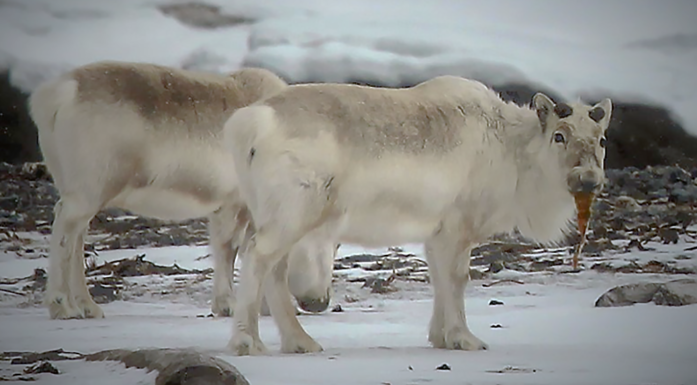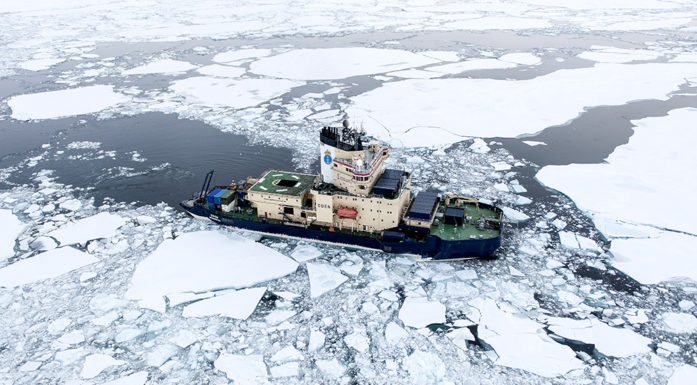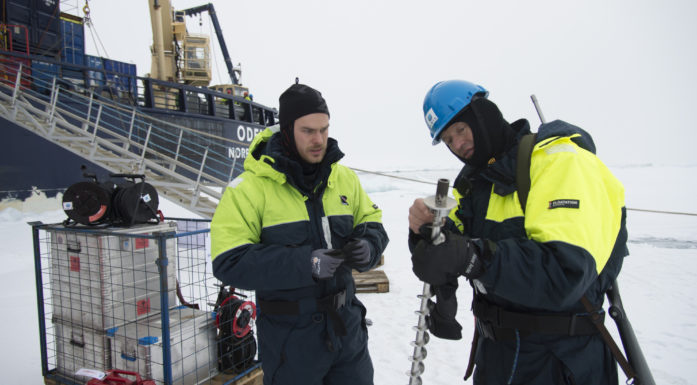Crushing ice to save platforms
It’s been a warm winter on Svalbard this year. But this doesn’t apply to the laboratory where Niek Heijkoop works. There it’s a stable -10° Celsius
The goal is to figure out how ice affects built structures, and vice versa, under the frequently very harsh conditions in the Arctic.
“I hope my results can be used in computer models,” says Niek Heijkoop, who is a master’s student at the University Centre in Svalbard (UNIS) and TU Delft in the Netherlands. He has chosen to spend several months at a time in the UNIS laboratory at roughly 78 degrees north in Longyearbyen.
Heijkoop is collaborating with other researchers, including several from NTNU, to test ice that has cyclic – or regular – stresses applied to it. Heavy clothing and boots are de rigueur to tolerate the specially designed cold room lab.
But why on earth do we need to know how ice responds when subjected to cyclic loadings over time?
To make exploration safer
It’s not exactly a secret that the temperature on our planet has gone up in recent years. This creates uneasiness and many questions. But some people also see opportunities in the situation.
Wind turbines in the Baltic Sea are a present-day example. More ships may use northern waters as they become ice-free in the future. And other people see the milder weather and imagine being able to look for oil and gas, minerals and other resources in the north. That scenario would require permanent installations, which will need to withstand the sometimes rather harsh conditions to be found a few degrees south of the North Pole.
Understanding how ice reacts around fixed and floating installations under different conditions is paramount for conducting this kind of exploration.
Ice can surround a stable platform in the far north for much of the year. A platform like this will move, affect the ice and in turn be affected by it. Relatively steady wave action will cause these movements to repeat themselves again and again. Therefore, the researchers want to study how such repetitive waves affect ice.
The pressure that arises in the ice from these movements can be simulated in the lab at UNIS.
-
- You might also like: Lazarus ice
Make their own ice
“It’s basic physics,” says Heijkoop.
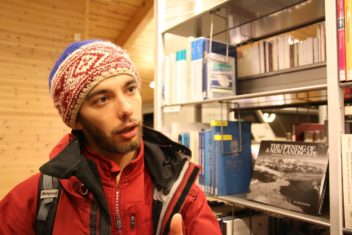
Niek Heijkoop has chosen to spend several months at a timeat 78 degrees North latitude. His laboratory is at UNIS, the University Centre in Svalbard. Photo: Anne Sliper Midling, NTNU
Sea ice strength is sensitive to how fast loads are applied. This is also the case when applying cyclic stresses to the ice.
Waves, for example, are a natural load for sea ice that repeats cyclically and with a specific frequency. It is important to examine the strength properties of sea ice for such loads.
Structures can also move with a particular frequency as a result of the ice being forced and crushed against the structure. In this case it helps to understand how the cyclical load applied from the structure affects the ice strength.
The challenge is to obtain results that can be compared. This means that the ice samples that are subjected to pressure must be similar enough so that the results from different tests can provide real answers. Going outdoors to fetch a random block of ice won’t cut it. So the researchers make their own ice in the Svalbard lab, in order for it to be as consistent as possible from test to test.
Long-term work
Heijkoop isn’t exactly starting at zero.
His advisors include associate professor Jeroen Hoving from TU Delft, and postdoc Torodd Skjerve Nord from SFI Sustainable Arctic Marine and Coastal Technology (SAMCoT) at NTNU.
Nord is also an adjunct and associate professor at UNIS.
“Heijkoop’s work is the start of a long-term effort to better understand how ice is affected by cyclic loading. This has already been investigated in part, but not enough. For example, we know a lot about how ice behaves under cyclic loading at -10° Celsius, but we know very little about what happens when the temperature rises to -5°,” said Nord.
In a larger context, the researchers want to understand whether this could have an impact on how they describe ice in numerical models that calculate loads and response in structures.
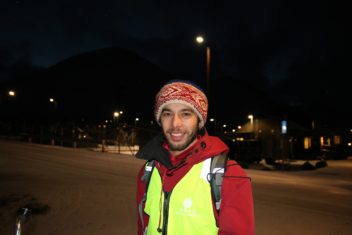
Niek Heijkoop subjects ice to cyclical loads to see how it reacts. It’s basic physics, but it’s also instrumental in understanding conditions in the Arctic. Photo: Anne Sliper Midling, NTNU
-
- You might also like: Working safely in a cold, remote place
Cooperation
NTNU works closely with TU Delft on arctic research and also has a long tradition of cooperation with UNIS. The University commits significant resources each year to relevant research in the Arctic.
“Heijkoop’s testing involves huge practical difficulties, and we have to incorporate procedures so that the “life course” of each ice sample is as similar as possible,” says Nord. “We were lucky and got help from the research group that has studied this the most of any group anywhere. David M. Cole from the Cold Regions Research and Engineering Laboratory (https://www.erdc.usace.army.mil/Locations/CRREL/) of the US Army Corps of Engineers, visited us and helped us solve a number of challenges related to this testing,” he adds.
The results of the research will determine how they will move ahead with their research.
“We’ll let Niek present the results of his master’s thesis this summer and then consider what further resources are needed. Ice on structures still has several unresolved aspects, so we have to prioritize with TU Delft to establish relevant research goals. We’re noticing that the relevance of research on ice loads has increased in relation to the development of offshore wind farms in the Baltic Sea,” says Nord.
